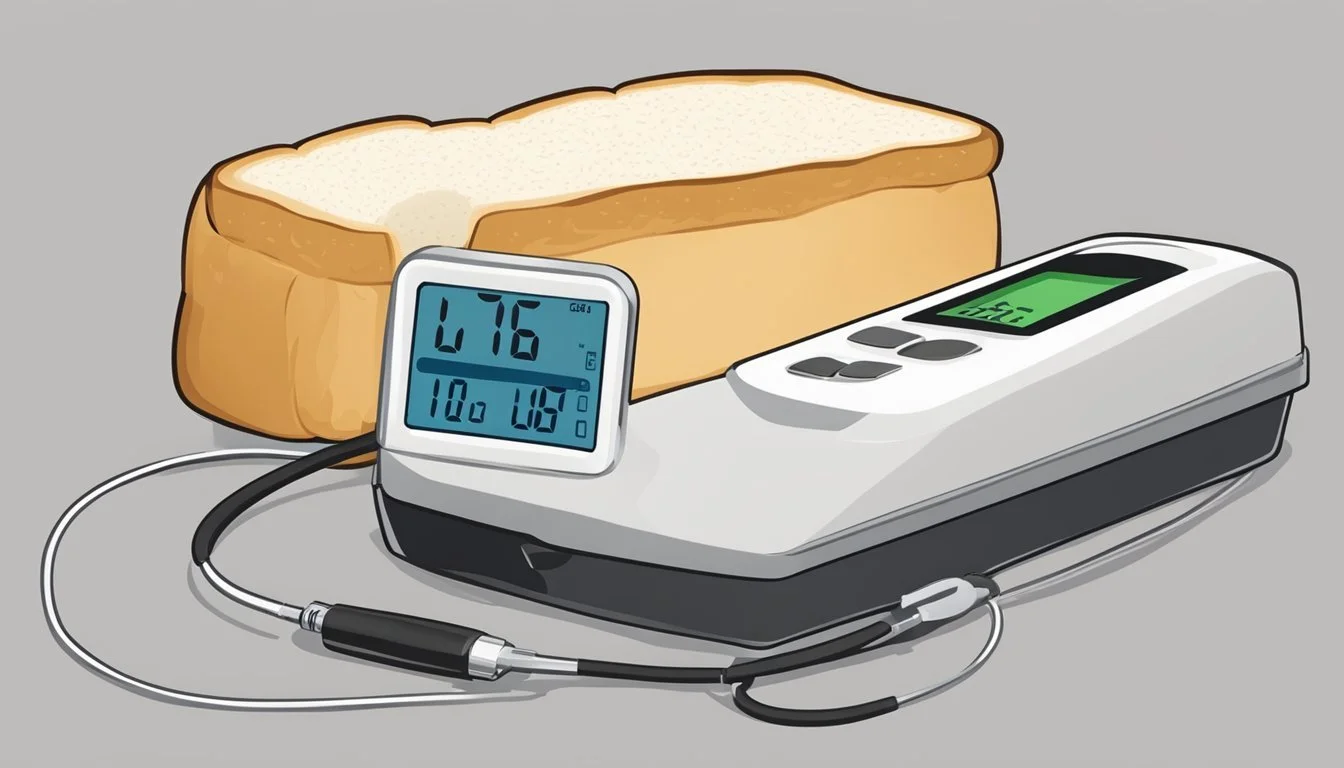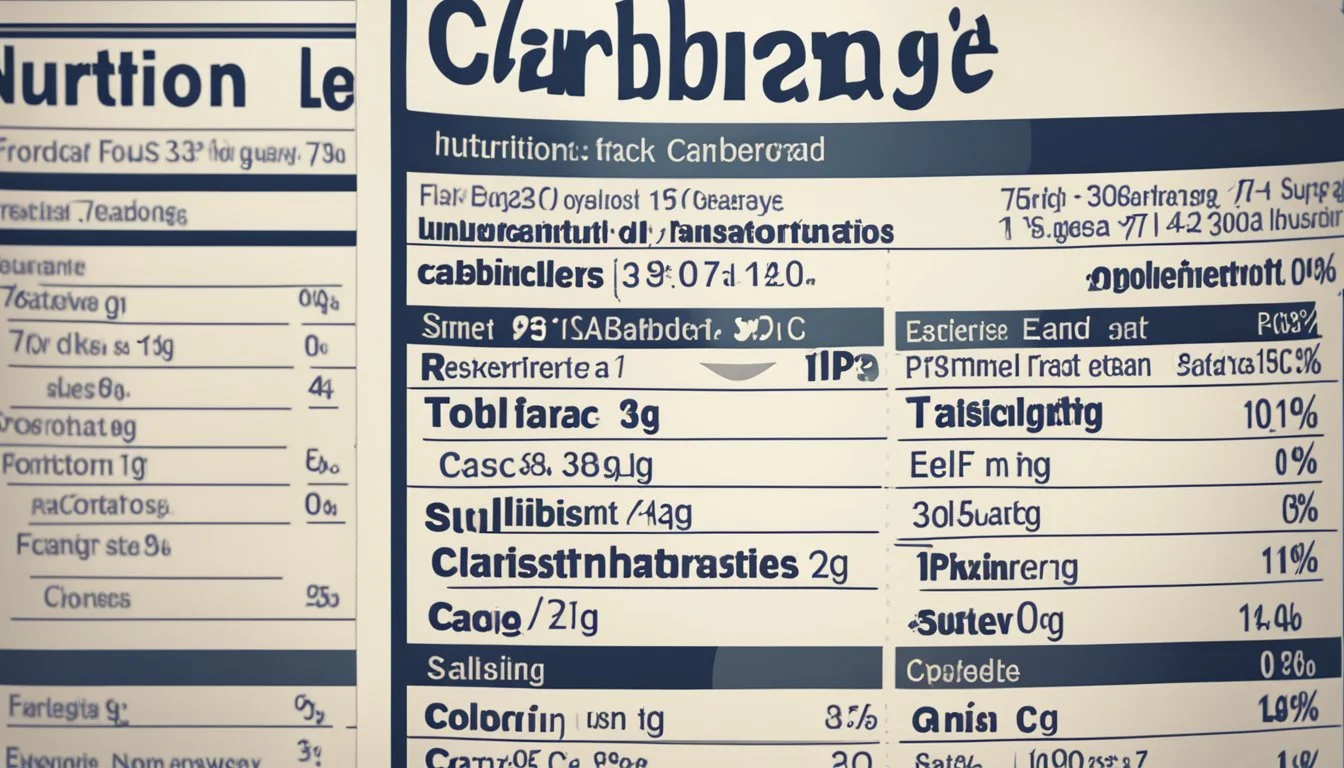Can Diabetics Eat White Bread?
Understanding Its Impact on Blood Sugar
People with diabetes often wonder if they can eat white bread, given its reputation for spiking blood sugar levels. The answer is not entirely straightforward. Diabetics can eat white bread, but it is generally recommended to choose whole grain or 100 percent whole wheat varieties to better manage blood sugar levels. This is because white bread is made from highly processed flour and added sugar, which can quicken the absorption of sugar into the bloodstream.
Whole grain breads are healthier alternatives as they contain more fiber, vitamins, and minerals, which contribute to a slower and steadier increase in blood sugar levels. Pairing bread with a healthy fat or protein can also help mitigate blood sugar spikes, making it a more manageable part of a diabetic diet.
Balancing carbohydrate intake is crucial for diabetes management, and understanding how different types of bread affect blood sugar is an important aspect of this. Making informed choices about bread can help people with diabetes enjoy their meals without compromising their health.
Understanding Diabetes and Carbohydrate Metabolism
Carbohydrates are essential in managing diabetes since they significantly impact blood sugar levels. The type of diabetes determines how carbohydrates affect an individual's metabolism and their subsequent blood sugar control.
The Role of Carbohydrates in Blood Sugar Management
Carbohydrates, when consumed, are broken down into glucose. This glucose enters the bloodstream, raising blood sugar levels. The body uses insulin, a hormone produced by the pancreas, to help cells absorb glucose for energy.
The quantity and type of carbohydrate influence blood sugar levels. Simple carbs cause rapid spikes, while complex carbs containing fiber lead to more gradual increases. Monitoring carbohydrate intake is critical for maintaining optimal blood sugar levels, especially for individuals with diabetes.
Types of Diabetes and Their Relationship With Carbs
Type 1 Diabetes is characterized by the body's inability to produce insulin. People with this type must manage their carbohydrate intake closely and administer insulin to control blood sugar levels.
Type 2 Diabetes involves insulin resistance, where the body doesn't respond effectively to insulin. As a result, managing carbohydrate consumption is vital, especially focusing on complex carbs with low glycemic indexes to prevent blood sugar spikes.
Both types require tailored carbohydrate management strategies to ensure stable blood sugar levels and prevent complications.
The Nutritional Profile of White Bread
White bread is a common staple in many households, but it's essential to understand its nutritional makeup, primarily focusing on its ingredients and nutrient composition.
Ingredients and Nutrient Composition
White bread is primarily made from refined flour, which is milled to remove the bran and germ, resulting in flour that has a finer texture but fewer nutrients.
Refined flour in white bread typically lacks natural fiber, vitamins, and minerals found in whole wheat. This impacts the nutritional content significantly.
A standard slice of white bread generally contains approximately:
Calories: 70-80
Carbohydrates: 12-15 grams
Sugars: 1-2 grams
Fiber: Less than 1 gram
Protein: 2-3 grams
Fat: 0.5-1 gram
While white bread provides quick energy due to its high carbohydrate content, it offers minimal fiber and protein, and contains small amounts of fat.
Analyzing Refined Flour and Added Sugars
Refined flour in white bread causes a rapid spike in blood sugar levels. This can be problematic for diabetics, as managing blood glucose is vital.
Additionally, added sugars in some white bread can further affect blood sugar control. The glycemic index of white bread is typically higher, meaning it converts to glucose quickly in the bloodstream.
Despite its convenience and taste, the lack of essential nutrients such as fiber and protein makes white bread less ideal compared to whole grain alternatives.
For those managing diabetes, mindful consumption and portion control are crucial to minimize potential blood sugar impacts.
Whole Grains vs. White Bread for Diabetics
Whole grains offer significant health benefits over white bread, particularly for people with diabetes. This section will discuss these advantages and provide tips on how to identify genuine whole grain products.
The Benefits of Whole Grain Alternatives
Whole grain breads are rich in essential nutrients, including vitamins, minerals, and fiber. Unlike white bread, which is made from refined grains that have most of their nutritional value removed, whole grain bread retains the entire grain kernel. This means more fiber, which helps manage blood sugar levels by slowing down digestion.
Whole grains typically have a lower glycemic index compared to white bread. A lower glycemic index indicates a slower rise in blood sugar levels, which is crucial for managing diabetes. Sourdough and sprouted grain breads are excellent options; their fermentation process further reduces the glycemic impact.
Incorporating whole grains into the diet can also improve overall heart health. Whole grains contain more complex carbohydrates and proteins, making them a healthier choice. They also undergo less processing, preserving their natural nutrients.
How to Identify True Whole Grain Products
Identifying true whole grain products is essential for those looking to manage their diabetes effectively. The first step is to examine the ingredient list on the nutrition labels. The first word should be "whole" (e.g., whole wheat, whole grain).
Look out for the Whole Grain Stamp, an indicator that the product contains a significant amount of whole grains. Be wary of misleading terms like "multi-grain" or "seven-grain," which do not guarantee the use of whole grains.
Check the fiber content as well. Whole grain products should have at least 2-3 grams of fiber per serving. Higher fiber content indicates a product closer to its natural, unrefined state, beneficial for blood sugar management.
Following these guidelines can help individuals with diabetes make informed choices and improve their diet quality.
The Impact of Glycemic Index on Blood Sugar
The glycemic index (GI) measures how quickly carbohydrates in food raise blood sugar levels. This section explores glycemic response in diabetes and how white bread affects glycemic control.
Understanding Glycemic Response in Diabetes
The glycemic index is crucial for managing diabetes because it helps predict how foods will impact blood sugar. Foods with a high GI are digested and absorbed quickly, causing rapid spikes in blood sugar levels.
For diabetics, frequent spikes in blood sugar can lead to long-term complications. Comparing different types of bread, whole grain options usually have a lower GI compared to refined carbs, such as white bread. These lower GI options can help maintain more stable blood sugar levels.
How White Bread Affects Glycemic Control
White bread typically has a high glycemic index, meaning it can cause quick increases in blood sugar. This is due to its refined carbohydrate content, which lacks the fiber found in whole grain alternatives.
Diabetics need to be cautious with white bread intake. Including small portions alongside low-glycemic foods, like vegetables, can help mitigate its effects. Monitoring blood sugar after consuming white bread offers insights into personal glycemic responses and guides better dietary choices.
In summary, while diabetics can eat white bread, understanding its impact on glycemic control is critical for effective diabetes management.
Incorporating Bread into a Diabetic Meal Plan
Incorporating bread into a diabetic meal plan requires careful consideration of portion sizes and selecting the right type of bread. It is possible to enjoy bread without compromising blood sugar levels by making informed choices and maintaining balance.
Balancing Portion Sizes and Meal Timing
Controlling portion sizes is critical for people with diabetes. One serving of bread usually contains about 15 grams of carbohydrates. Limiting bread intake to one or two servings per meal helps manage blood sugar levels effectively.
Timing meals and snacks also plays a role in blood sugar management. Pairing bread with proteins or healthy fats can slow down carbohydrate absorption, leading to more stable blood sugar levels. For example, enjoying a slice of bread with peanut butter or an egg can be beneficial.
Frequent monitoring of blood sugar levels can help adjust portions and meal timing to individual needs. Using smaller plates and pre-slicing bread can aid in portion control.
Recommended Bread Options for Diabetics
Choosing the right type of bread is essential. Whole grain bread is often recommended due to its higher fiber content and lower glycemic index compared to white bread. Fiber helps slow glucose absorption, reducing blood sugar spikes.
Low-carb breads are another option that can fit well into a diabetic meal plan. These breads often contain alternative flours and fewer carbohydrates, making them suitable for maintaining more consistent blood sugar levels.
Breads with a high fiber content, such as those made with whole grains, nuts, seeds, or added fibers like inulin, can be beneficial. Reading nutrition labels to check for fiber content and overall carbohydrate count is a good practice.
Storing bread properly, such as freezing slices individually, ensures that it maintains its quality and makes portion control easier.
Reading and Interpreting Nutrition Labels
When determining if white bread is suitable for diabetics, understanding nutrition labels is crucial. Key elements include carbohydrates, fiber, sugars, and the ingredient list. These components help identify how the bread may affect blood sugar levels and overall health.
Assessing Carbs, Fiber, and Sugars in Bread
Carbohydrates play a significant role in blood glucose levels. On the nutrition label, the total carbohydrates are listed in grams. This includes all types of carbohydrates: starches, sugars, and fiber. Diabetics need to pay attention to the total carbohydrate content per serving.
Fiber can help regulate blood sugar. In bread, higher fiber content is preferable. Fiber can be subtracted from the total carbohydrates to get net carbs, which gives a more precise impact on blood sugar.
Sugars listed on the label include both natural and added sugars. It's important to choose bread with low added sugars. High sugar content can spike blood glucose levels quickly.
Deciphering Ingredients List for Healthier Choices
The ingredient list provides insight into the quality of the bread's ingredients. Ingredients are listed by weight, from most to least. Look for whole grains or whole wheat as the first ingredient, indicating a healthier option.
Avoid terms like "enriched wheat flour" or "refined flour", which indicate highly processed grains. Whole grain ingredients retain more nutrients and fiber, beneficial for managing diabetes.
Be wary of added sugars hidden under names like "high-fructose corn syrup" or "sucrose". These add unnecessary calories and can disrupt blood sugar control. Also, watch for additives and preservatives that contribute to overall health risks.
By carefully reading and interpreting these labels, diabetics can make informed choices about which bread to include in their diet, helping manage their condition effectively.
Practical Tips for Choosing Healthier Bread
When selecting bread, it's crucial to focus on options that provide more fiber and nutrients while having a lower glycemic impact. This helps in managing blood sugar levels effectively.
Exploring Multigrain and Sprouted Bread Options
Multigrain bread includes a combination of different grains like barley, millet, oats, and flaxseed. These grains increase the fiber content and add essential nutrients. Multigrain loaves often feature whole grains, which retain more of their natural vitamins and minerals compared to refined grains.
Sprouted grain bread is made from whole grains that have begun to germinate. This process increases the bread’s nutritional value, making it easier to digest and facilitating the absorption of nutrients. It often has a lower glycemic index, helping to maintain stable blood sugar levels.
Creative Alternatives to Traditional White Bread
Switching from traditional white bread to alternatives can benefit blood sugar control. Sourdough bread undergoes a fermentation process that reduces its glycemic impact. This makes it a better choice for people with diabetes compared to standard white bread.
Using wraps or making an open-faced sandwich can reduce carbohydrate intake. Whole-grain wraps and lettuce wraps offer satisfying alternatives while cutting down on the carb content. Additionally, whole grain pita is another versatile option that can be filled with a variety of nutrient-rich ingredients.
Incorporating these alternatives into a diet can help maintain better blood sugar levels and provide a broader range of nutrients.






